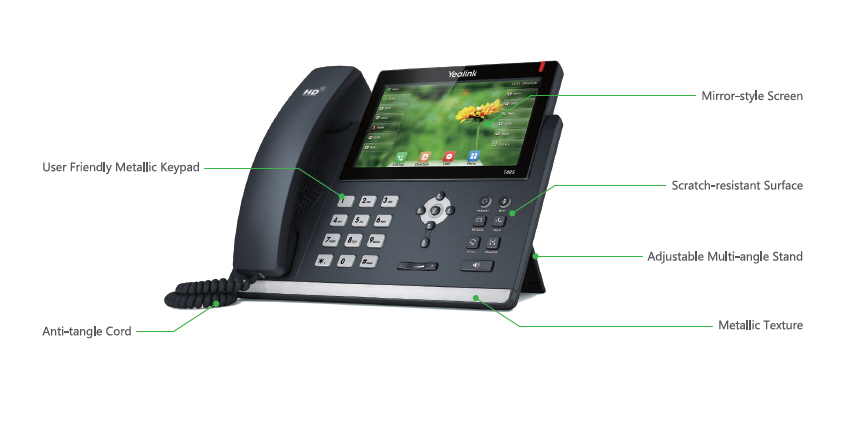Introduction


In an increasingly interconnected world, businesses are relying on Voice over Internet Protocol (VoIP) phone systems more than ever before. This technology enables seamless communication over the internet, offering significant cost savings and flexibility compared to traditional telephony. However, with the rise of cyber threats and vulnerabilities linked to VoIP systems, VoIP Phone System Las Angeles safeguarding these technologies has become paramount. One effective method for enhancing VoIP security is through network segmentation.
Network segmentation involves dividing a computer network into smaller, distinct segments or subnetworks. By doing so, organizations can enhance security protocols and streamline performance. In this article, we will delve deep into how utilizing network segmentation can bolster VoIP security, ensuring that your VoIP phone system remains resilient against potential attacks.
Understanding VoIP Phone Systems
What Is a VoIP Phone System?
A VoIP phone system allows users to make voice calls using the internet instead of traditional telephone lines. This method converts voice signals into digital data packets transmitted over IP networks. The benefits are numerous: reduced costs, enhanced flexibility in communication, and integration with other applications like video conferencing and instant messaging.
How Do VoIP Phone Systems Work?
VoIP phone systems rely on various technologies such as Session Initiation Protocol (SIP) and Real-Time Protocol (RTP). SIP is responsible for establishing and terminating calls while RTP manages the transmission of audio data. Essentially, when you speak into a VoIP phone, your voice is digitized, packetized, transmitted over the internet, and then reconstructed on the recipient's end.

Advantages of Using VoIP Phone Systems
Cost Efficiency: Lower operational costs compared to traditional phones. Flexibility: Easily scalable to accommodate business growth. Feature-Rich: Access to features like call forwarding, voicemail-to-email transcription, and more. Mobility: Allows remote work capabilities by enabling calls from any device connected to the internet.The Importance of Security in VoIP Communications
Why Is VoIP Security Critical?
While the advantages of using a VoIP phone system are clear, they come with inherent risks. Cybercriminals often target these systems due to their vulnerabilities:
- Eavesdropping: Unauthorized individuals can intercept conversations if not adequately secured. Denial of Service (DoS): Attackers may overload your network with traffic to disrupt service. Fraudulent Calls: Hackers can manipulate systems to make unauthorized calls leading to financial losses.
Common Threats to VoIP Security
Packet Sniffing Call Hijacking Malware Attacks Social EngineeringUtilizing Network Segmentation to Enhance VoIP Security
What Is Network Segmentation?
Network segmentation divides a larger network into smaller segments or sub-networks for improved management and security. Each segment can have its own security policies tailored to specific needs.
How Does Network Segmentation Improve Security?
By isolating critical assets like your VoIP infrastructure from less secure parts of the network:
- It limits access for unauthorized users. Reduces exposure during a breach. Facilitates quicker identification of threats within specific segments.
Best Practices for Implementing Network Segmentation
Identify Critical Assets: Determine which components should be isolated based on their importance. Create Subnetworks for Specific Functions: For instance, create separate segments for data storage and VoIP communications. Apply Layered Security Measures: Use firewalls and intrusion detection systems tailored for each segment.Segmentation Strategies for Enhancing VoIP Security
VLAN Segmentation
Virtual Local Area Networks (VLANs) allow organizations to create logical networks within a physical structure without requiring additional hardware.
Advantages of VLANs in Securing VoIP
- Enhanced traffic management Improved security policies Simplified troubleshooting
Subnetting
Subnetting involves dividing an IP address space into smaller segments called subnets.
Benefits of Subnetting for VoIP
- Efficient routing Reduced broadcast domains Better control over traffic flow
Implementing Quality of Service (QoS) in Segmented Networks
What Is Quality of Service (QoS)?
Quality of Service refers to managing data traffic efficiently across networks ensuring that critical applications like VoIP receive priority bandwidth allocation.
How QoS Affects VoIP Performance
Properly implemented QoS ensures minimal latency and jitter during calls—critical factors for maintaining high-quality communication standards in a segmented network environment.
Integrating Firewalls with Segmented Networks
The Role of Firewalls in Securing VoIP Systems
Firewalls serve as barriers between trusted internal networks and untrusted external sources. They analyze incoming and outgoing traffic based on predetermined security rules.
Types of Firewalls Suitable for VoIP Security
Packet Filtering Firewalls Stateful Inspection Firewalls Next-Generation Firewalls (NGFW)Monitoring and Analyzing Traffic in Segmented Networks
Importance of Network Monitoring
Continuous monitoring helps identify unusual patterns or anomalies that could indicate potential security threats targeting your segmented networks.
Tools for Effective Traffic Monitoring
Intrusion Detection Systems (IDS) Network Management Software Traffic Analysis ToolsUser Education on Secure Communication Practices
Why User Education Matters
Employees must be educated about best practices related to using a VOip phone system securely; unaware users can inadvertently introduce vulnerabilities.
Key Topics for Training Sessions
Recognizing Phishing Attempts Password Management Safe Internet Browsing PracticesConducting Regular Audits on Network Segmentation Practices
The Need for Audits
Regular audits help ensure that your network segmentation strategies align with current best practices while identifying areas needing improvement or updating protocols in light of new threats or technologies.
Items To Include In Your Audit Checklist
Compliance With Standards Effectiveness Of Current Policies Incident Response PreparednessFAQs about Utilizing Network Segmentation for Enhancing VoIP Security
1. What is network segmentation?
Network segmentation involves dividing a computer network into smaller sub-networks boosts performance while enhancing security by limiting access between different sections.
2. Why is it necessary to segment my network?
Segregating your network minimizes risks associated with breaches by isolating sensitive information such as voice communications from less secure areas within your organization’s infrastructure.
3 .How does VLAN help secure my voip phone system?
VLANs provide logical separation without needing additional physical infrastructure allowing tailored security measures based on specific requirements – thereby increasing overall safety levels across diverse operations including VOIp services.
4.What tools do I need for effective traffic monitoring?
Tools such as Intrusion Detection Systems (IDS), Traffic Analysis Software & specialized Network Management Solutions enable comprehensive oversight across segmented environments ensuring proactive identification & remediation against emerging threats targeting VOIp infrastructures.
5.What are some common attacks against voip systems?
Common attacks include eavesdropping where conversations get intercepted & manipulated; Denial-of-Service attacks aimed at overwhelming resources causing outages; fraudulent call scenarios exploiting unauthorized access resulting in financial losses.
6.How often should I conduct audits on my segmented networks?
It’s advisable conducting regular audits bi-annually at minimum while aligning them alongside major changes/upgrades ensuring compliance with up-to-date standards & relevance towards mitigating evolving cyber threat landscapes impacting VOIp systems specifically.
Conclusion
In conclusion, utilizing network segmentation is an indispensable strategy when it comes to enhancing the security posture of your organization’s VOIp communications infrastructure effectively reducing vulnerability surface areas whilst also streamlining operational efficiencies across various departments benefiting overall productivity levels significantly! As cyber threats continue evolving rapidly staying ahead requires proactive measures such as implementing robust segmentation strategies coupled alongside user education initiatives fostering greater awareness throughout teams driving better practices ultimately securing valuable assets safeguarding future endeavors!